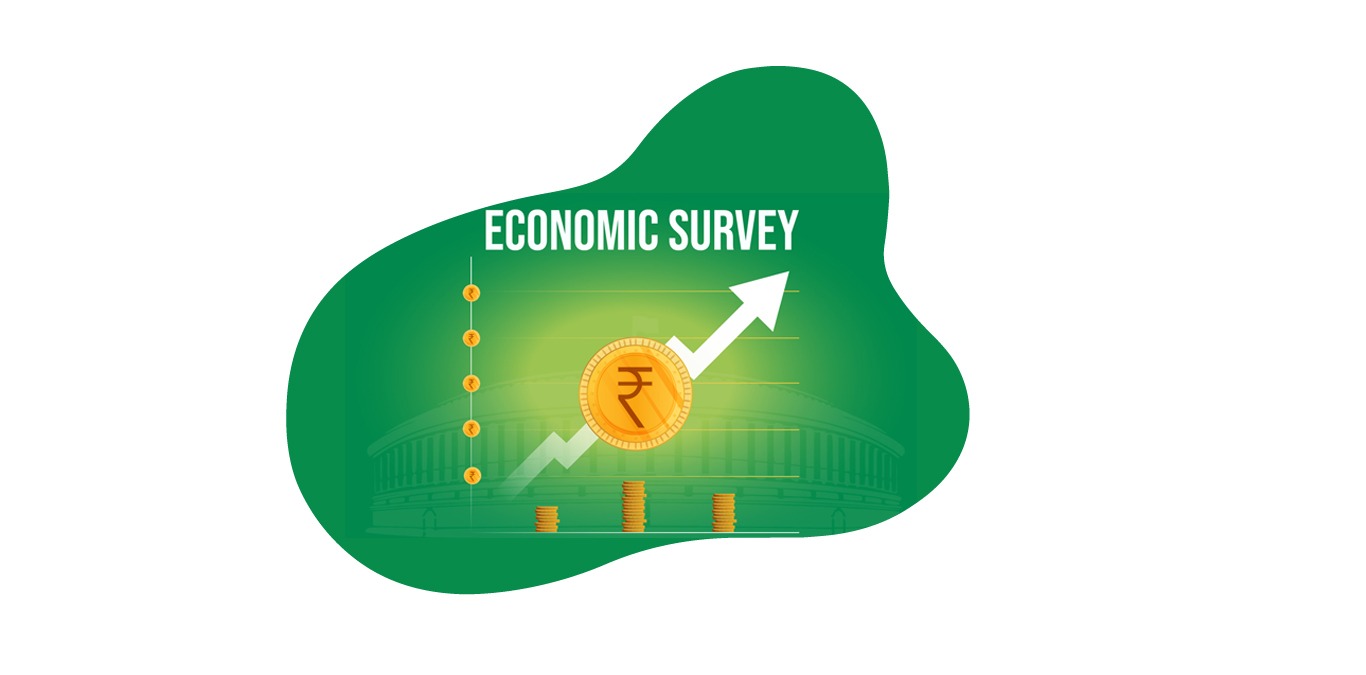In the introductory chapter, we promised you a deep dive into the Budget FY23. But before we get into details, a look at India’s economic survey is a must.
What is the Economic Survey and why does it matter?
The Chief Economic Advisor of India puts forth the Economic Survey every year before the Budget presentation. The survey evaluates the trends in economic factors such as employment, agricultural and industrial production, infrastructure, money supply, prices, imports, exports, foreign exchange reserves, and other relevant economic factors that affect the Budget.
Yes, the survey looks at these whole host of factors.
The economic survey helps in the effective mobilization of resources and their allocation in the Union Budget.
Now that we know what the economic survey is. Let us look at the highlights.
Finance Minister Nirmala Sitharaman tabled the Economic Survey 2021-22 in Lok Sabha. The report projected the economy would grow by 8-8.5% in FY23. She declared India is well-placed to meet the future challenges based on the widespread vaccine coverage, supply-side reforms, easing of regulations, robust export growth, and the opportunities to ramp up capital spending.
Highlights of the Economic Survey
- The survey expects the economy to grow by 9.2% during FY22. It signifies a recovery to the pre-COVID19 levels from the 7.3% contraction in 2020-21 due to the pandemic and subsequent nationwide lockdowns to control the spread of coronavirus.
- The projected GDP growth for FY23 is 8-8.5%. These estimates are based on forecasted oil prices of USD 70-75 per barrel in the next financial year against the current price of USD 90.
- India will follow an agile policy instead of the traditional waterfall policy that introduced front-loaded stimulus packages most economies adopted in 2020.
- Higher CAPEX that will support growth in the next fiscal will be possible due to robust growth in FY22 Exports.
- Private sector investment will grow as the financial system is strong enough to support the economic revival.
- Government finances will witness consolidation in FY22 after the deficit and debt increased in the previous year.
- India moved from the ‘Fragile Five’ nations tag to become an economy with the fourth-largest forex reserves, giving the agile policy room for strategic maneuvering.
- High WPI inflation partly due to the base effect may even out. However, the imported inflation caused due to rising global energy prices may be a cause for worry.
Summarizing the Survey highlights
The highlights above offer a positive outlook for FY23. However, the survey did not consider the uneven nature of economic recovery, continued distress in the labor market, the sharp rise in inequality, and the lingering financial issue among the MSMEs (Micro, small and medium enterprises), especially those operating in the informal economy.
This survey correctly flagged the issues with IMF’s assessment of 9% growth and World Bank, which expects India to grow at 8.7%. The survey believes the external environment will not be as kind, and financial conditions will tighten considerably.
In its recent World Economic Outlook, the IMF has downgraded its global GDP growth rate from 5.9 percent in 2021 to 4.4 percent in 2022 as they expect global trade volumes growth to plummet in 2022. The threat of another wave of infections and its repercussions on economic activity is looming. However, the survey strongly defended the policy response to these concerns.
What can you expect?
You can expect continued government support for the economy. Based on the trends, the government has enough money to sustain support and ramp up capital expenditure when required. The sharp rise in the central government revenues will allow it to increase spending. But the government will have to consider the limits placed by the rising government debt of 89.3% in FY22BE (budgeted estimates), up from 74.6% in FY20.
We have shared the most pertinent details of what the economic survey found. This report was the basis for the blueprint for the Amrit Kaal the Finance Minister spoke of in the Budget presentation on the 1st February.
We hope you find this article interesting and look forward to reading more about the Budget and its implications.
Read more: How Long-term investing helps create life-changing wealth – TOI.
How useful was this post?
Click on a star to rate it!
Average rating 0 / 5. Vote count: 0
No votes so far! Be the first to rate this post.

